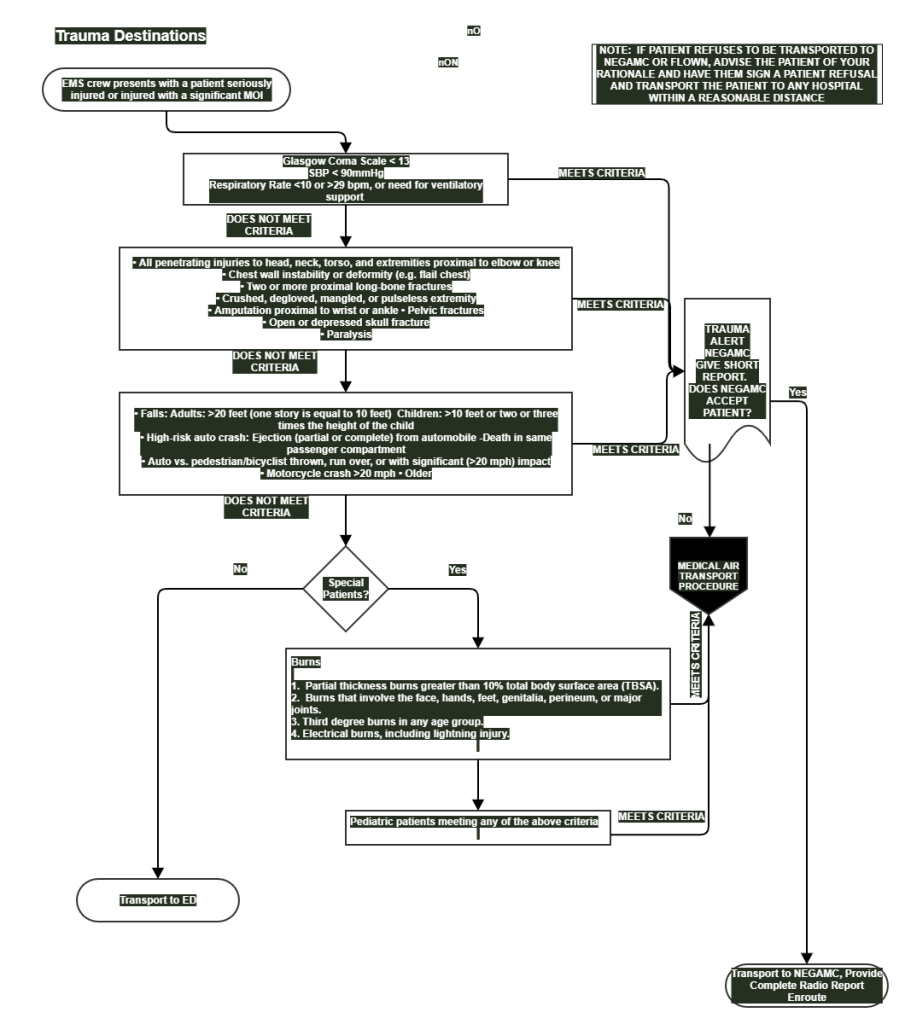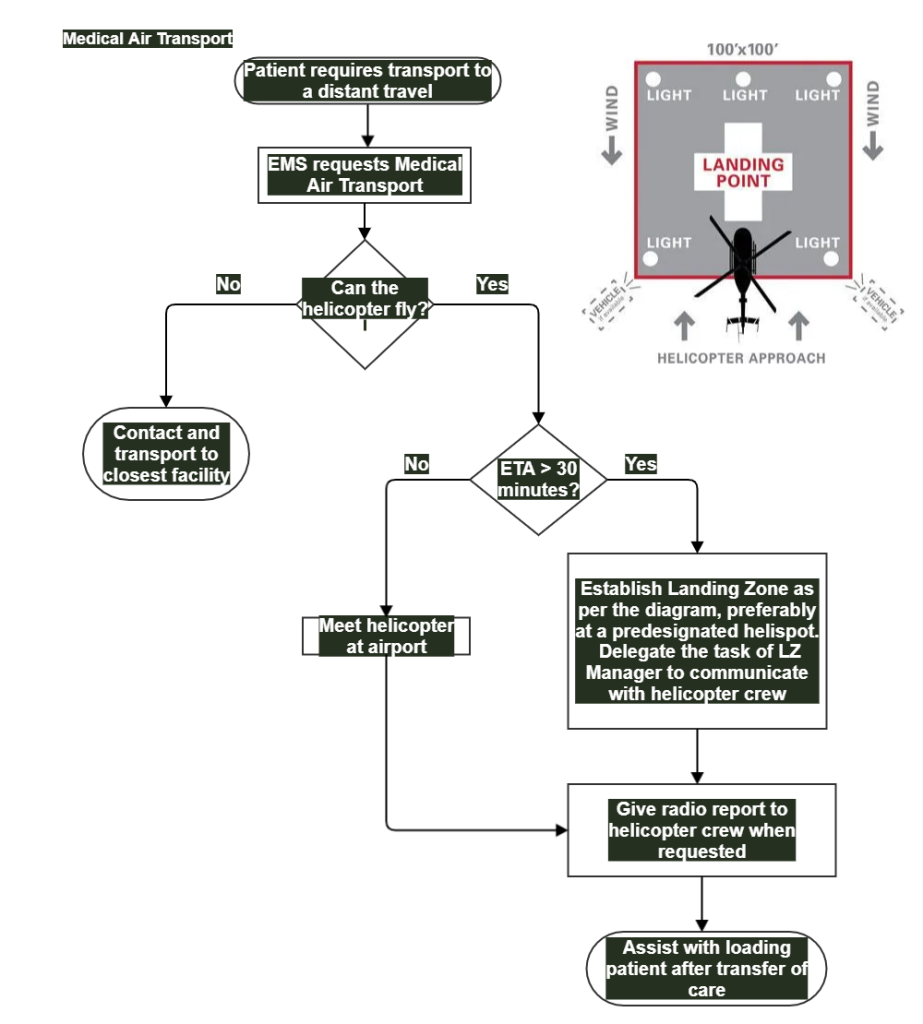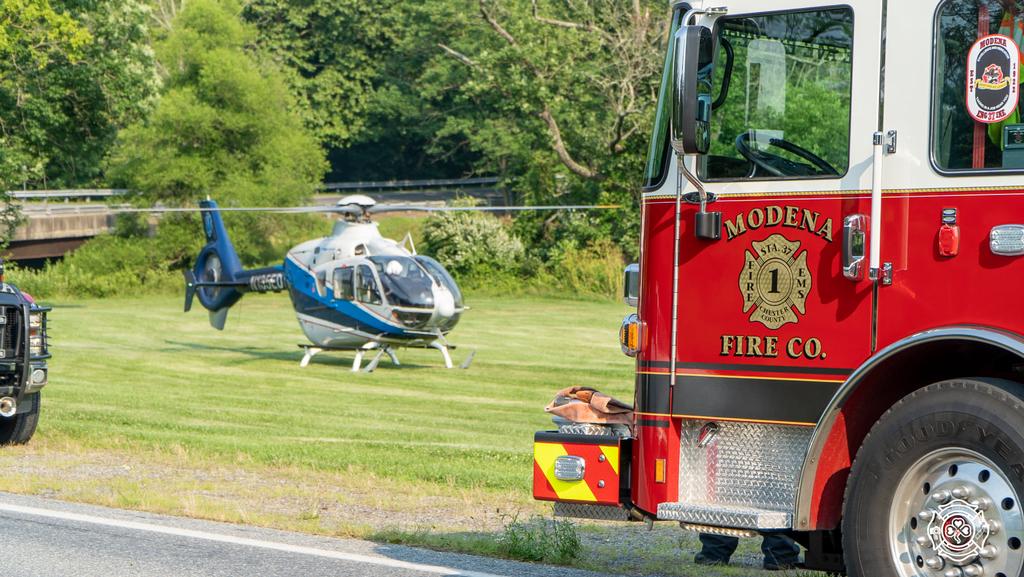Calling For The Bird
Published .
Indication for medical air transport

The only real indication is that the patient needs the services of a different hospital other than what can be arranged for that is within a reasonable distance for ground transport. Hospitals may arrange medical air transport either by rotary or fixed wing (depending upon the distance that needs to be covered) and have the ambulance move the patient from the hospital to a helipad, landing zone, or airport. A typical scenario that would involve the hospital arranging medical air transport could be a burn patient that is transported to the local hospital but needs the services of a burn center that is 200 miles away.
When medics are on scene and request medical air transport, they have a single patient that needs to go to a specialized facility that is far outside any reasonable distance calculation. Since civilian medical air transport helicopters can usually only take one patient at a time, they not that helpful for multiple patient incidents (unless there is a single patient that would benefit from a quick ride to the trauma center). The request comes from the scene, and what they want to see is a helicopter that can land somewhere close by and receive the patient.
Activation
Follow local protocols for requesting medical air transport. The request is made over the radio to dispatch, who can notify the medical air transport company to get the helicopter ready for a mission (or ‘spin the blades‘). Once the request is made, the helicopter will contact the dispatcher and give an estimated time of arrival (ETA) or advise the dispatcher that the helicopter is unable to perform the mission.
What is the ambulance crew to do when they have made request for medical air transport but it can’t fly? They go to the closest hospital or trauma center. The closest hospital can provide better care for any patient than a bunch of medics or medical flight crew in the back of an ambulance. Further, the local hospital can arrange for transport after the patient has been stabilized.
Setting up a landing zone

Once the helicopter has arrived in the airspace around the incident where medical air transport has been requested, they will contact the medics on the ground and ask for a situation report. The medics will advise of the patient condition and await for the arrival of the helicopter

As the helicopter nears the incident, it will fly in circles until the pilot understands the landing zone. The landing zone (LZ) is established somewhere near the ambulance. The helicopter will fly into the wind to the LZ usually set up by firefighters and fire trucks. Once the helicopter lands, the medics on the helicopter dismount the aircraft and move toward the ambulance crew and their patient.
Patient handoff

When the helicopter medics reach the ambulance crew and patient, they are usually waiting for them in the ambulance. The receive a verbal report from the ambulance crew and immediately begin care. Once the helicopter medics are satisfied with the patient’s condition, they move the patient to the helicopter (with the help of the ambulance crew and their stretcher). The patient is moved to the helicopter using a route where everyone is in visual contact with the pilot (who remains in the aircraft). Once the patient is loaded in the helicopter, the ambulance crew returns the stretcher to their ambulance and the helicopter takes off and begins transport.
After the helicopter has taken off, the landing zone should remain in effect until the helicopter is no longer in the airspace in the event of a mechanical problem with the helicopter.
